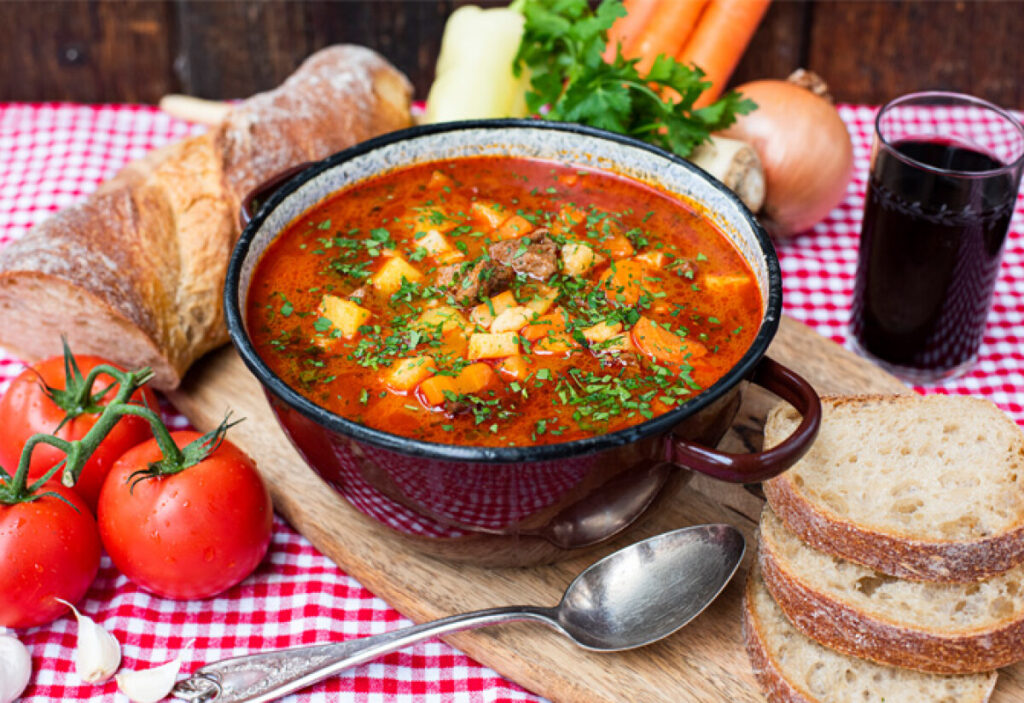In Hungary, the word for “pancake” is palacsinta (pronounced pah-la-cheen-ta). Unlike the thick pancakes in the US, they are thin, delicate crêpes filled with various sweet or savory ingredients. While typically served as dessert, they are also great for special occasion brunches. This recipe, a beloved family favorite, features sweet Hungarian pancakes with a light, lemony cottage cheese filling and a topping of fresh raspberry sauce or you can use Nutella as many people here do.

Ingredients
- 3 large eggs, lightly beaten
- 1-1/4 cups whole milk, plus more if needed
- 3 tablespoons butter, melted
- 1/4 teaspoon salt
- 1 cup all-purpose flour, plus more if needed
For the filling
- 2 cups cottage cheese (not reduced fat)
- 1/4 cup confectioners’ sugar
- Zest of 1 lemon
- 1/2 teaspoon vanilla extract
For the raspberry sauce
- 2 cups fresh raspberries, washed and well drained
- 1 tablespoon freshly squeezed lemon juice
- 1 tablespoon sugar
- 2 tablespoons water
- 2 teaspoons cornstarch
Instructions
In a medium mixing bowl, whisk together eggs, milk, melted butter, and salt. Gradually whisk in flour until the mixture is smooth. Refrigerate covered for at least an hour to thicken the batter.
While the batter chills, prepare the filling and raspberry sauce. For the filling, combine cottage cheese, confectioners’ sugar, lemon zest, and vanilla. Refrigerate.
For the raspberry sauce, simmer raspberries, lemon juice, and sugar in a saucepan. Blend water and cornstarch in a bowl and add to the raspberry mixture. Simmer until thickened, then set aside to cool.
To make the palacsinta, oil a 10-inch nonstick pan, heat over medium, and add 1/4 cup batter. Tilt the pan to coat it evenly with the thin batter. Flip and cook briefly.
Stack the cooked palacsinta on a plate, creating about 1 dozen.
To serve, spread 2-1/2 tablespoons filling on a crêpe. Roll it gently into a tube and place seam side down on a plate. Top with raspberry sauce.
Here are five tips for making perfect crêpes (palacsinta):
1. Rest the batter for at least 1 hour, whisk again before cooking to remove lumps. You can make it ahead up to a day.
2. Use a true, nonstick 10-inch pan, or an 8-inch pan with 3 tablespoons of batter for smaller crêpes.
3. The first crêpe helps gauge batter consistency. If too thick, add 2-3 tablespoons of milk; if too thin, whisk in a little extra flour (1-2 tablespoons).
4. Flip the crêpe as soon as the edges dry and appear set. It’s fine if it doesn’t land flat; you can easily straighten it.
5. Stacking the cooked crêpes directly is usually not a problem, but if you prefer, you can place wax paper between them when storing.










